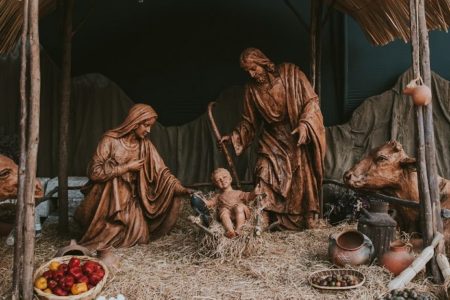By Denise Liersch
Like so many of us, I’ve spent a lot of time in Zoom meetings or on the phone over the past months and have been struck by how much I keep hearing the themes of connection from so many people, from all sorts of contexts.
It’s a theme of our public health messages and across the media. Congress Tasmania has found strong themes in “connection” and “campfire”, and this year’s National Reconciliation Week theme was “In this together”. We hear “we are one” and Ben Lee’s song We’re all in this together over and over again. I wondered if people would get tired of talking about needing to keep connected, and the impact of being disconnected, yet it seems it won’t let us go. We have a heightened awareness of the critical importance of human and social connection for our mental, communal and spiritual wellbeing and wholeness, and we keep discovering new aspects to what this means, and sharing it with each other.
So what have we been discovering?
We are learning that technological skills are not necessarily required to keep us connected – though it helps dramatically. We are far more adaptable and able to learn more new skills than we ever thought possible. Yet we can also keep connected through phone, printed prayer and worship sheets and letters in creative and innovative ways.
Where deeper and more significant connections are being formed, it seems to be through ministers, leaders and community members intentionally working together and caring for each other, moved by a heightened awareness that human connection with God and each other lies at the heart of faith. The ministry of eldership is seeing a deep renewal in many communities.
Changed ways of gathering have opened up new relationships, including with people who had never before connected to the church. Stories of the generosity of wider community members have been shared, where people with no previous connection to the Church have stepped in to assist in mission when at-risk congregational volunteers have needed to step back. Congregations don’t have to do it all alone: they can work together in partnership with the wider community, connected in loving service by a shared sense of purpose.
Whether restrictions are easing or tightening, communities are discovering that keeping connected and serving their local communities doesn’t necessarily depend as much on their buildings or traditional programs as they expected, and some are reconsidering the future focus and shape of their ministry and mission as a result. With increased sharing and collaboration, some congregations are seeing the possibilities of continuing their sharing arrangements with other congregations, rather than seeking to return to their previous independent existence.
Awareness of our deep spiritual need for connection and community, has heightened our awareness of the disproportionate effect on those whose connection to the wider community is already tenuous or suppressed. For those whose daily lives include experience of racism, disregard, prejudice or stigma, the impact of being isolated and disconnected is amplified. It’s not surprising that there is such a rising up at this time, with the cry out against police brutality and systemic racism in the US resonating with the experience of First Peoples and people of colour in Australia – and in our own Church.
We speak about how our humanity and the integrity of our whole Church is diminished wherever we are willing to live with marginalisation of others, so it is inspiring to hear more and stronger voices naming what needs to change for us to be a more truly multicultural Church, First and Second Peoples walking together. Of course, this needs to be through what we do and not just what we say. This will be especially important in how we meet together as a Synod in February, and how we approach together the various challenges, including financial challenges, brought about through the effects of the pandemic.
For almost every community and area of ministry, especially in areas of tightened restrictions, there is tiredness, sometimes exhaustion, and uncertainty about how long we can hold out and hold through these times. The cumulative effect of constantly adapting and readapting to each new change, is taking its toll. We live in the tension of knowing we are sustained by grace and not by works, and the temptation to think we are responsible for the survival of the Church through these times. The constant surprise is finding God is at work sparking off new shoots of growth and opening up new possibilities, sometimes in ways we may have been resisting for years, and in the most unexpected ways.
As we learn how fragile we are as humans, how tenuous our hold on our mental and spiritual wellbeing, and how easily our plans and sense of security can be turned upside down, the Spirit is moving us to know how much we are upheld and sustained by each other in faith, how much prayer is the core of our life together as individuals and as communities of faith, and how little it sometimes takes to bring sustaining life to others.
The Spirit is moving us to know we are a family in faith, holding together and upholding each other in love – through phone and Zoom prayer and friendship groups, shared cuppas (virtual or real) and Facebook exchanges. In our ministry, mission and learning, the Spirit is drawing us into more collaboration and sharing as leaders, ministers, worshipping communities, and councils of the Church, upholding each other, praying with and for each other.
A recurring image for me over these past few weeks has been Jesus as the vine: “I am the vine; you are the branches. If you remain in me and I in you, you will bear much fruit; apart from me you can do nothing. Now remain in my love” (John 15)
The image is not so much about being connected with each other, but about all of us being connected together into the life of God through Jesus. No congregation can exist as a disconnected branch, operating autonomously. We find our life connected as part of the whole Church, into the vine. The image also reminds us that healthy vines bear fruit to sustain the life of others – for the sake of the world God loves. And the image includes an awareness of the constant cycle of seasons and the much-needed process of regular pruning by the gardener – so essential to ensure the health and vigour of the vine as a whole, as well as its capacity to bear fruit.
This image of painful pruning resonates with our experience of the huge change and challenges we face as a nation and as a Church, in our mission and ministry, our congregations, presbyteries and Synod. There is much that seems to be changing, falling away, or that we know needs to be cut back. Yet pruning also evokes the promise of new branches sprouting in new directions to be more fruitful than ever, whether that be work toward an increase in social housing, new partnerships and sharing of resources in local ministry, or new connections with the community in mission.
The invitation is to remain together, knowing ourselves as branches of one Church rooted in the life of Christ, and to continue to share and work together – even as we open ourselves to be pruned by the Spirit of God in order that the whole vine might flourish and be renewed.
I pray that the Spirit of grace may continue to grow in us, that we may remain in the love of Christ.





